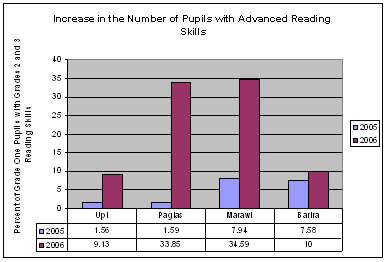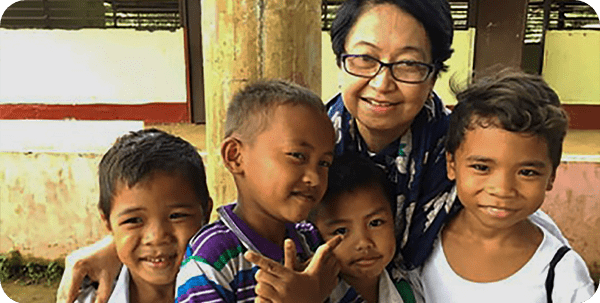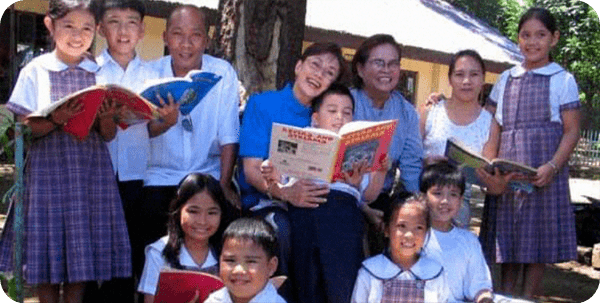(A Quick Look at the Numbers)
1. Reduced the number of non-readers.
In 2005– 8 out of 10 grade one students were unable to read. Three years after, non-readers number only 1 out of 10 (except in Paglas).
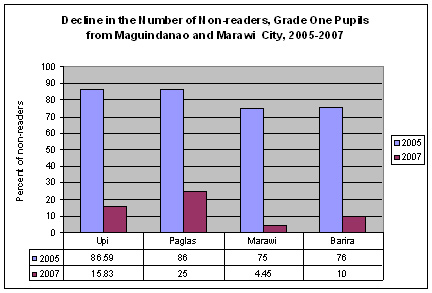
In 2006, 9 out of grade one students from Bongao and Siasi were unable to read*. Two years after, the number of non-readers has been trimmed to 5 out of 10 (still a big number of non-readers, but a year’s program produced significant results.
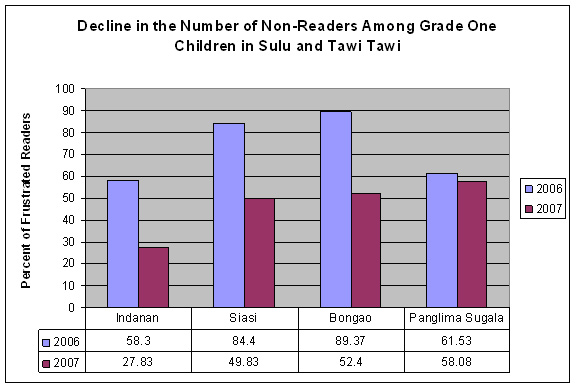
In Indanan, the number of non-readers declined by one-half, i.e. from 58.3 percent to about 28.0 percent.
There was minimal decline of the number of non-readers in Panglima Sugala. The children need support beyond training of parents, teachers, and instructional materials.
2. Increased the Number who can Read Very Well (Grades 2 and 3 Reading Skills)
Before, less than 10 percent of the students had very good reading skills, Now, over a quarter of grade one students in Paglas and Marawi and almost 10 percent in Upi and Barira, have good reading skills.
